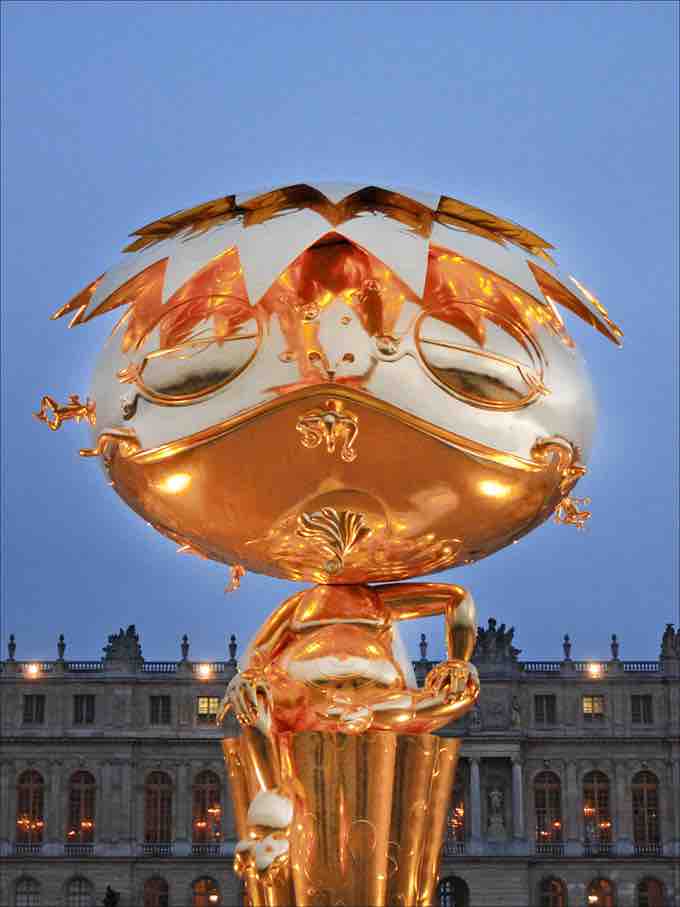Japanese Art After World War II
Welcoming the new post-World War II period of Japanese history, the government-sponsored Japan Art Academy (Nihon Geijutsuin) was formed in 1947. The Academy contained both nihonga (traditional Japanese) and yōga (European-influenced) divisions. Government sponsorship of art exhibitions had ended, but they were replaced by private exhibitions, such as the Nitten, on an even larger scale. Although the Nitten was initially the exhibition of the Japan Art Academy, since 1958 it has been run by a separate private corporation. Participation in the Nitten became almost a prerequisite for nomination to the Japan Art Academy.
The arts of the Edo and prewar periods (1603-1945) had been supported by merchants and urban people, but they were not as popular as the arts of the postwar period. After World War II, painters, calligraphers, and printmakers flourished in the big cities—particularly Tokyo—and became preoccupied with the mechanisms of urban life, reflected in the flickering lights, neon colors, and frenetic pace of their abstractions. Styles of the New York-Paris art world were fervently embraced. After the abstractions of the 1960s, the 1970s saw a return to realism strongly flavored by the "op" and "pop" art movements, embodied in the 1980s in the explosive works of Ushio Shinohara.
Many such outstanding avant-garde artists worked both in Japan and abroad, winning international prizes. Some of these artists felt more identified with the international school of art rather than anything specifically Japanese. By the late 1970s, the search for Japanese qualities and a national style caused many artists to reevaluate their artistic ideology and turn away from what some felt were the empty formulas of the West. Contemporary paintings within the modern idiom began to make conscious use of traditional Japanese art forms, devices, and ideologies.
Mono-ha
Mono-ha is the name given to group of 20th-century Japanese artists. The mono-ha artists explored the encounter between natural and industrial materials, such as stone, steel plates, glass, light bulbs, cotton, sponge, paper, wood, wire, rope, leather, oil, and water, arranging them in mostly unaltered, ephemeral states. The works focus as much on the interdependency of these various elements and the surrounding space as on the materials themselves. A number of mono-ha artists turned to painting to recapture traditional nuances in spatial arrangements, color harmonies, and lyricism.
Nihonga, Rimpa, and Kano Influence
Japanese-style, or nihonga, painting continued in a prewar fashion, updating traditional expressions while retaining their intrinsic character. Some artists within this style still painted on silk or paper with traditional colors and ink, while others used new materials, such as acrylics.
Many other older schools of art were still practiced, most notably those of the Edo and prewar periods. For example, the decorative naturalism of the Rimpa school, characterized by brilliant, pure colors and bleeding washes, was reflected in the work of many artists of the postwar period in the 1980s art of Hikosaka Naoyoshi. The realism of Maruyama Ōkyo's school and the calligraphic and spontaneous Japanese style of the gentlemen-scholars were both widely practiced in the 1980s. At times, all of these schools (along with older ones, such as the Kano school ink traditions) were drawn on by contemporary artists in the Japanese style and in the modern idiom. Many Japanese-style painters were honored with awards and prizes as a result of renewed popular demand for Japanese-style art beginning in the 1970s. More and more, the international modern painters also drew on the Japanese schools as they turned away from Western styles in the 1980s. The tendency had been to synthesize East and West, and some artists such as Shinoda Toko had already leapt the gap between the two. Shinoda's bold sumi ink abstractions were inspired by traditional calligraphy but were realized as lyrical expressions of modern abstraction.
Anime Influence
There are also a number of contemporary painters in Japan whose work is largely inspired by anime subcultures and other aspects of popular and youth culture. Takashi Murakami is perhaps among the most famous and popular of these, along with the other artists in his Kaikai Kiki studio collective. His work centers on expressing issues and concerns of postwar Japanese society through seemingly innocuous forms. He draws heavily from anime and related styles but produces paintings and sculptures in media more traditionally associated with fine arts, intentionally blurring the lines between commercial, popular, and fine arts.

Sculpture by Japanese artist Takashi Murakami at Versailles, France. 2007-2010 bronze and gold leaf.
Takashi Murakami is perhaps the most famous and popular contemporary Japanese artist whose work is largely inspired by anime subcultures and other aspects of popular and youth culture.